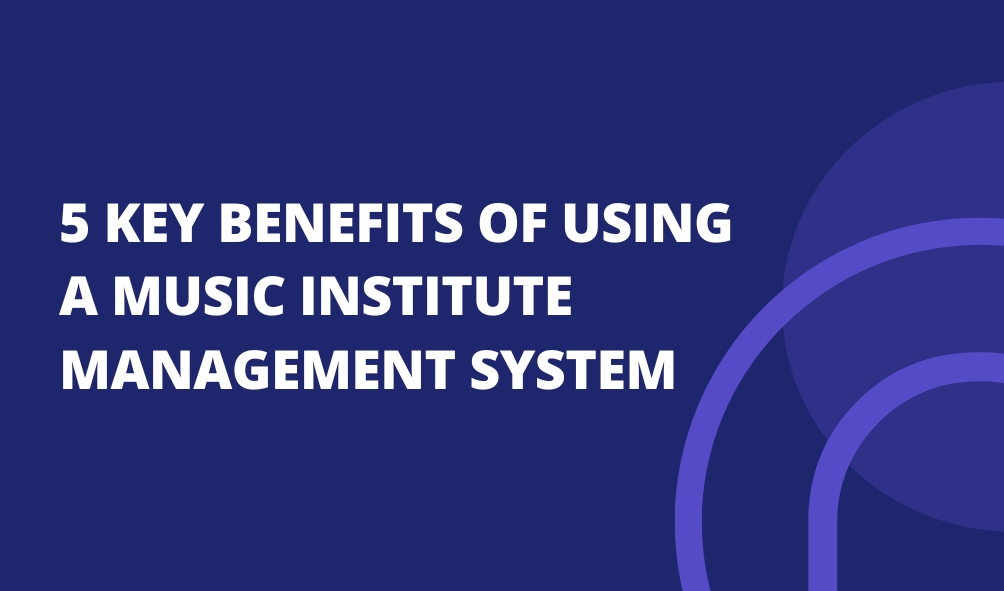9 Must-Have Features In A Music Institute Management System
9 Must-Have Features in a Music Institute Management System
Managing a music institute efficiently requires more than just passion for music—it demands a structured system that Makes easy administrative tasks, improves student learning, and improves overall management.
A Musical Institute Management System is designed to streamline operations by automating tasks such as class scheduling, fee management, attendance tracking, and teacher assignments.
Whether you run a small music academy or a large institution, implementing the right management software can significantly improve efficiency and organization.
Why a Music Institute Needs a Management System
Running a music institute involves multiple tasks, from student enrollment and scheduling to teacher assignments and fee management.
Without a structured system, handling these operations manually can become overwhelming, leading to mismanagement, missed payments, scheduling conflicts, and communication gaps. This is where a Musical Institute Management System becomes essential.
A well-designed system not only automates administrative processes but also improves student engagement, teacher coordination, and overall efficiency.
With features like class scheduling, attendance tracking, and seamless fee collection, institutes can focus on delivering high-quality music education rather than struggling with operational challenges.
Investing in the right Music School Software ensures smooth workflows, better time management, and an improved learning environment for students.
9 Must-Have Features in a Music Institute Management System
Managing a music institute efficiently requires the right tools to handle various administrative and academic tasks.
A Musical Institute Management System must include essential features to ensure smooth operations, better student engagement, and efficient management.
Below are the 10 must-have features that every music institute should look for in Music School Software.
1. Role-Based Access Control
A well-structured Music School Management system should offer role-based access control, ensuring that different users—administrators, teachers, students, and parents—have specific permissions.
Administrators can manage financial transactions and class scheduling, teachers can track student progress and lesson plans, and students or parents can access attendance records and fee details. This structured access control improves security, efficiency, and data privacy while keeping operations well-organized.
2. Class and Lesson Management
Handling multiple classes and lessons manually can be overwhelming. A Music Education Software should offer a class and lesson management feature that automates scheduling, prevents conflicts, and reschedules lessons if necessary.
It provides that students and teachers have real-time updates on their schedules while allowing administrators to manage the curriculum efficiently.
This system keeps everything structured, preventing confusion and ensuring an optimized learning experience.
3. Attendance Management
Tracking student attendance is crucial for maintaining discipline and engagement. A music management system should have an automated attendance tracking feature, allowing teachers to mark attendance digitally and generate reports on student participation.
This feature should also include automated notifications to inform parents about absences and provide proactive student monitoring. With real-time attendance insights, music institutes can improve student retention and academic progress.
4. Invoice and Fee Management
Financial management can be complex without automation. A Management Music system must have an integrated invoice and fee management module that generates invoices, tracks payments, and sends reminders for due fees.
It should support multiple payment gateways like credit cards, PayPal, and bank transfers. With automated finance tracking, music institutes can reduce errors, save time, and improve cash flow management.
5. Seamless Integration
A music management software should seamlessly integrate with external tools like accounting software, online payment gateways, and virtual learning platforms.
For example, Google Calendar integration can help with class scheduling, Zoom or Microsoft Teams integration can enable online lessons, and QuickBooks integration can automate accounting tasks. These integrations eliminate manual work and improve overall efficiency.
6. Instrument Management
Music institutes often provide instruments to students, making instrument management an essential feature. This functionality allows administrators to track instrument assignments, schedule maintenance, and monitor inventory.
With a proper instrument tracking system, institutes can reduce the risk of lost or damaged instruments, ensuring better organization and accountability.
7. Absentee Reports
A Student Management System should offer detailed absentee reports to monitor student participation. This feature helps administrators and teachers identify students with frequent absences and take proactive steps to engage them.
Additionally, automated reports can be generated to analyze attendance trends and ensure that students receive the necessary support to stay on track with their lessons.
8. Teacher Assignments
Managing teacher schedules efficiently is crucial for a smooth workflow. A Music Lesson Scheduling feature should include an automated teacher assignment system, ensuring that the right teacher is assigned to the right student based on their availability and expertise.
It also helps prevent scheduling conflicts, balance workload distribution, and ensure a seamless learning experience for students.
9. Reporting & Analytics
Data-driven decision-making is essential for any Music School Management system. With a comprehensive reporting and analytics feature, institutes can generate valuable insights such as student performance reports, financial summaries, and teacher efficiency evaluations.
These reports help music institutes identify areas for improvement, optimize resource allocation, and make informed decisions to improve overall productivity.
Conclusion
A well-equipped Musical Institute Management System can transform the way music schools operate. From automated class scheduling and attendance tracking to fee management and analytics, these 10 must-have features help simplify administrative tasks, improve efficiency, and improve student engagement. Investing in a robust Music School Software ensures that music institutes can focus on their core mission—delivering high-quality music education while reducing administrative burdens.







